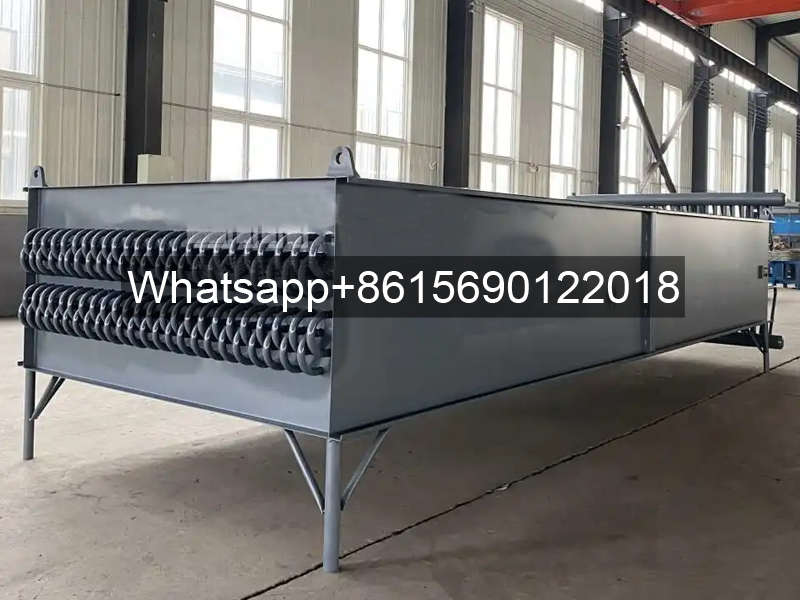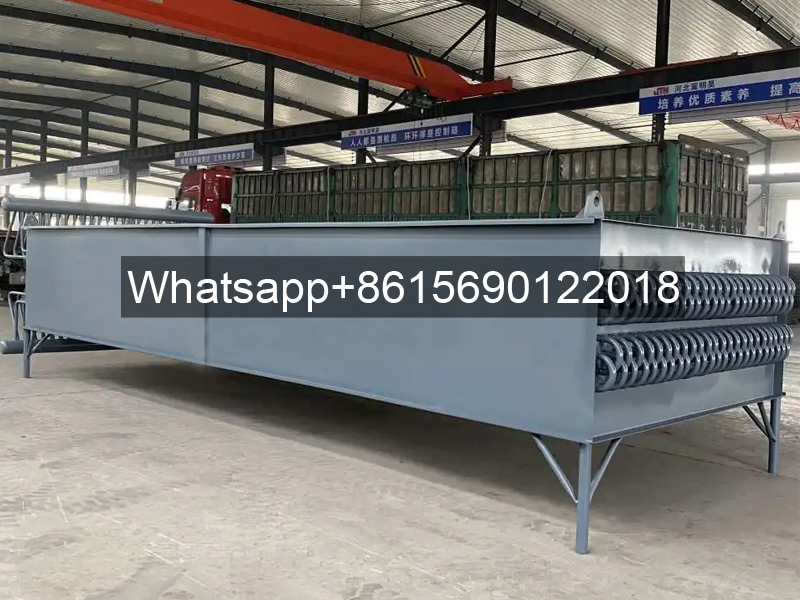Process introduction of steam condenser
1. Working principle of steam condenser
Steam condenser mainly realizes the condensation of steam through the principle of heat exchange. When high-temperature steam enters the condenser, it exchanges heat with the cooling medium in the condenser. The cooling medium is usually water or air. After absorbing the heat of steam, its temperature rises, while the steam gradually loses heat, the temperature decreases, and finally condenses into liquid.

This process can be divided into three main stages:
The first is the contact stage between steam and cooling medium. Steam and cooling medium meet on the heat exchange surface of the condenser and start heat transfer;
The second is the heat transfer stage. The heat in the steam is transferred to the cooling medium through the heat exchange surface, and the temperature of the steam gradually decreases;
The last is the condensation stage. When the temperature of the steam drops below its saturation temperature, the steam begins to condense into liquid and is discharged from the condenser.
The industrial heat exchange equipment produced by Cangzhou Datang Steel Pipe Co., Ltd. includes: finned tube heat exchanger, air preheater, boiler economizer, boiler economizer, condenser, steam radiator, steam generator, dryer, flue gas waste heat recovery equipment, etc.
2. Types and characteristics of steam condensers
Water-cooled condensers
Water-cooled condensers are the most common type of steam condensers. It uses water as a cooling medium to take away the heat from the steam. Water-cooled condensers have the advantages of high heat exchange efficiency, compact structure, and small footprint. However, it consumes a lot of water resources and requires water treatment to prevent scaling and corrosion.
Water-cooled condensers are usually divided into shell and tube condensers and plate condensers. The shell and tube condenser consists of a shell, a tube bundle, and a head. The steam flows in the shell, and the water flows in the tube bundle, and heat is exchanged through the heat exchange tube wall. The plate condenser consists of a series of metal plates. Steam and water flow between the plates and heat is exchanged through the plates.

Air-cooled condensers
Air-cooled condensers use air as a cooling medium, and blow air through the heat exchange surface of the condenser through a fan to take away the heat from the steam. Air-cooled condensers have the advantages of no water resources, easy installation, and low operating costs. However, its heat exchange efficiency is relatively low, it occupies a large area, and its operation effect is poor in high temperature environment.
Air-cooled condensers are usually divided into two types: finned tube condensers and coil condensers. Finned tube condensers are composed of finned tubes and fans. Steam flows inside the finned tubes, and air flows outside the finned tubes, and heat exchange is carried out through the fins. Coil condensers are composed of coils and fans. Steam flows inside the coils, and air flows outside the coils, and heat exchange is carried out through the coils.
3. Process parameters of steam condensers
Cooling medium flow rate
Cooling medium flow rate is one of the important parameters affecting the performance of steam condensers. Increasing the cooling medium flow rate can improve the heat exchange efficiency and speed up the condensation of steam. However, excessive cooling medium flow rate will also increase the energy consumption and operating cost of the pump. Therefore, it is necessary to select a suitable cooling medium flow rate according to the actual situation.
Steam pressure and temperature
The pressure and temperature of steam are also important parameters that affect the performance of steam condensers. Higher steam pressure and temperature will increase the difficulty of steam condensation, and a larger condenser and stronger cooling medium flow rate need to be selected. At the same time, the pressure and temperature of the steam will also affect the properties and uses of the condensed liquid.
Condenser structure and size
The structure and size of the condenser will also affect its performance. Reasonable structural design can improve heat exchange efficiency and reduce resistance loss. At the same time, the appropriate size can meet different steam flow and condensation requirements. When selecting a condenser, it is necessary to design and calculate according to the actual situation to ensure the performance and reliability of the condenser.
